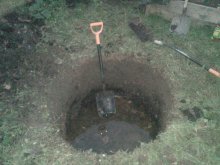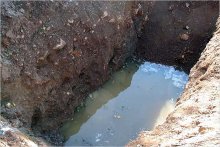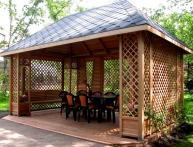How to determine the groundwater level at a site: basic methods
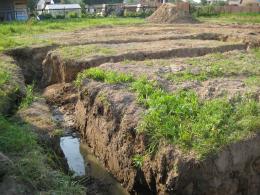
When building a house, it is important to determine the level of groundwater. Taking this into account, the type of foundation is chosen. Summer residents rely on groundwater when planting crops. This indicator is important when performing various works on a suburban area.
Content:
Types of soil water
The groundwater level is an underground aquifer that is located not very deep from the surface of the earth. At shallow groundwater depths, seasonal variations are observed. If there is a large amount of precipitation, the groundwater increases. During drought, on the contrary, the level decreases. All these changes are caused by various natural factors. If the water level constantly changes, this poses a serious threat to the owners. High moisture levels negatively affect outbuildings, vegetable gardens, flower beds etc.
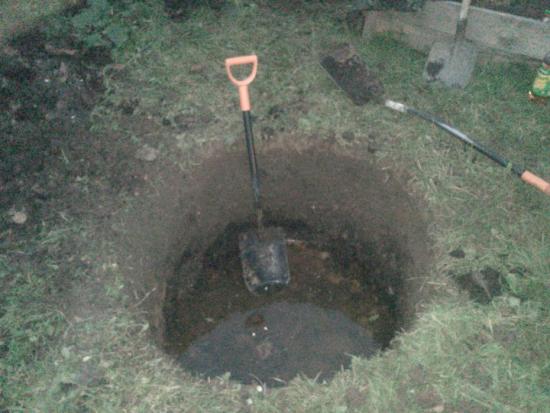
Depending on the depth of occurrence, there are 3 types of groundwater:
- Verkhovodka. The waters are located closer to the soil layer. Appears mainly in clayey or loamy areas. Its regime is variable and varies depending on the amount of precipitation. The water may dry out, indicating drought.
- Unpressured waters. Soil waters are located below the perched water on a waterproof layer.Such waters are formed by filtering surface water or, in rare cases, open sources.
- Artesian waters. These are the cleanest pressure waters. They lie at great depths and do not cause problems during construction.
Determining groundwater levels: basic methods
It is quite difficult to determine the water level without a surveyor, but every person can do it. There are several methods for determining groundwater:
- By plants
- By wells
- Well drilling
Vegetation will provide a good clue to groundwater. It is worth taking a close look at what plants grow on the site. If reeds grow on the site, then the depth of water is from 1-3 meters, cattail - up to 1 meter, sagebrush – 3-5 meters, licorice – 1.5-5 meters. When the waters are shallow, the grass in the area is brighter than in the neighboring area. Willow, alder, currants, and meadowsweet grow well in moist soils. The humidity level can also be determined by the trees: the tilt of several trees in one direction indicates a high aquifer.
Video about drilling a well to check groundwater levels:
The approximate level can be determined from nearby areas. The site can be located on a hill or in a lowland, with nearby ponds or streams. If there is a well near the site, then the level of occurrence can be determined by the mark left on the concrete inside the well. The easiest and fastest way define depth of groundwater - drilling a well. Almost every summer resident has a drill.Use it to drill a well and observe it for several days. If you notice an increase in water, this indicates a high groundwater level, which increases with precipitation. If there is no water in the well for several days, then there will be no problems during construction.
It is best to measure water levels in spring or autumn, during periods of heavy rainfall. You can use an old but effective method. Take a fresh egg and place it on the ground, removing the top layer. First, place a small piece of wool underneath. Then cover with a clay pot, and on top with a layer of earth, which was removed at the beginning. The next day, remove the pot and inspect the egg. The appearance of dew indicates shallow water. If the wool piece is slightly damp, but the egg is dry, then the waters are deep. If there are no signs of moisture, there is no water in the area.
How to deal with high groundwater
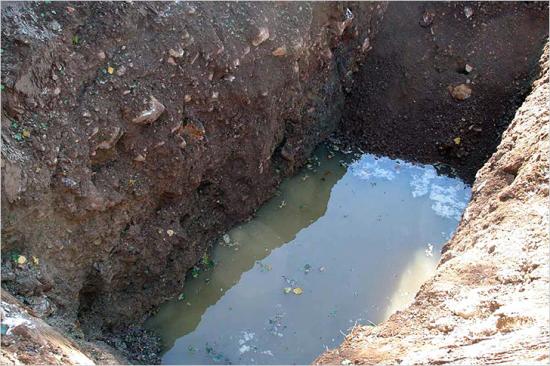
If soil waters are located at a depth of less than 2 meters, this indicates their high level. It is better not to start construction that involves constructing a pit or trench in this area. Groundwater in the area can be lowered. Near the land plot ditches can be installed. Its depth should be at least 70 cm. Place sand and gravel about 15 cm thick on the bottom. This is an open drainage system. There are also closed systems using perforated pipes. Pour sand and gravel into the bottom of the trench, and then lay geotextile material. Then lay the pipe, geotextile on top and fill it with soil.
The mechanical method involves pumping out water using a pump that is immersed in a well.
This way you can pump out water to the desired level. This method is quite simple, but you need to install a special drainage system to drain the water. This will help avoid flooding of buildings and death of plants. Other methods of reducing water are expensive and involve the use of electroosmosis and a wellpoint. With the help of special equipment you can lower the water to 20 meters. When choosing a method for reducing groundwater, you should take into account the size and shape of the foundation pit, the direction of groundwater, and the planning of other buildings on the site.
All these points are important to consider. The use of the drainage system is intended only for the construction of a house. When planning to build a bathhouse or garage, you will also need to perform drainage, if necessary. It happens that the site is not suitable for building a house and it is impossible to reduce soil water. The only way out of the situation is to install a pile screw foundation, which is resistant to possible problems. Determination of water level in soil – a very important point when building a house. After all, under the influence of moisture, cracks appear on the foundation and it begins to burst. Repairs will be very expensive. To prevent this, drainage systems should be used.
Interesting information about the vegetable garden

